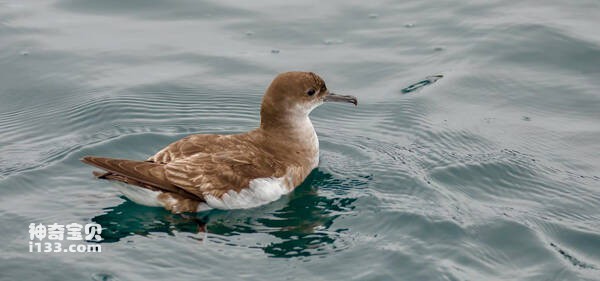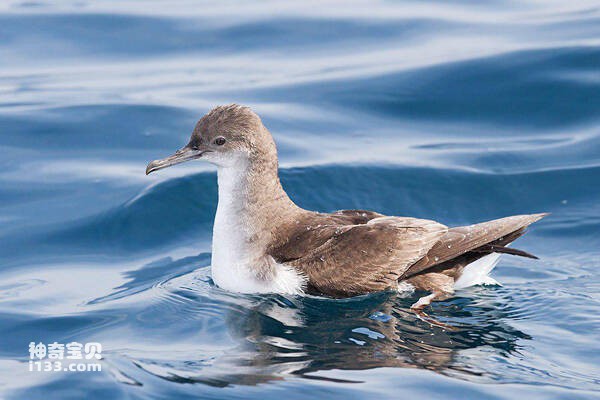Puffinus gavia
IUCN
LCBasic Information
Scientific classification
- name:Puffinus gavia
- Scientific Name:Puffinus gavia,Fluttering Shearwater
- Outline:Waterfowl
- Family:
Vital signs
- length:37CM
- Weight:230-415g
- lifetime:No textual research information is available
Feature
The upper body is dark brown with a white spot on the underside of the wings
Distribution and Habitat
Breeding ground: New Zealand.
Non-breeding: Australia.
Wandering: Antarctica and the Solomon Islands.
Seasonally uncertain: New Caledonia and Norfolk Island.
This species is a common and widespread species endemic to New Zealand. The largest colonies are distributed on the Three Kings Islands, the Moturoa Islands, the Motuhara Islands (the Cavalli Islands), northwest of the Chicks Islands, the Poor Knights Islands, the Mokohinau Islands, the Hen and Chicken Islands, the Mercury Islands, the Ruamaunuui Islands (the Alderman Islands) and the Tryphena Islands, as well as several other islands in the Cook Strait. There may be some adult birds in February that migrate to the east and south of Australia, but most remain close to the breeding ground throughout the year.
Often encountered near the coast and sometimes even enter the port. During breeding, they settle on small, well-vegetated islands with cliffs or rocky slopes, nesting in caves under grassland, shrubbery or coast
Appearance
It is 37 cm long with a 76 cm wingspan and weighs 230 to 415 g. It's a medium-sized seabird, somewhat reminiscent of the Mediterranean shearwater or sooty Shearwater. The upper body is uniformly dark brown, but there is a white spot on the back of the wings (actually the sides). The underbody is white except for a wide dark area at the wing tips. In worn feathers, the species appears paler; During molting, there is a white band on the secondary cover. A bird has a thin beak and a short tail. The legs and feet are pink with darker webbing. May be confused with the Australian Shearwater, sometimes forming mixed flocks. The Shearwater is slightly larger and, most importantly, has a significantly darker underside of its wings.
They all have tubular nostrils at the base of their beaks. The wings are typically long and narrow, with a streamlined design that allows for long journeys on the open ocean, using the wind and air movement generated by the waves to minimize effort and thus r
Details
Puffinus gavia has no subspecies: Fluttering Shearwater.

Brown-billed shearwaters are very social. Often live in groups with other gulls and seabirds. The flight is fast, low, direct, the wing beat is fast, and the glide is short. Even more effortless juggling in the wind. Their flight is powerful, easy, and often spectacular. Webbed feet allow them to swim and dive on the surface of the water.
A rapid "ka-how ka-how ka-how ka-how kihik kihik kihik kihik kihik kihik kihik irrrr" is most commonly heard at camp. It feeds mainly on small fish, crustaceans, and some coastal krill, sometimes on the surface, sometimes with its head underwater, or even in pursuit of prey underwater.

Brown-billed shearwaters breed on heavily vegetated islets and rock piles, nesting in burrows under grass, brush, or coastal forests, but occasionally breeding in rock burrows. The breeding season usually begins in September with one egg laid per litter and the young emerge from the nest in late January or February.
In 2004, the global population was estimated to be at least 100,000. Trend rationale: Populations may be declining due to predation by invasive species. Brown-billed shearwaters have suffered greatly from the introduction of predatory mammals on the small islands where they breed. Thanks to the efforts of New Zealand authorities and conservation societies, at least 15 small islands have been freed of these exotic mammals, mainly mice and cats. Attempts to establish a new breeding camp (by transporting baby birds) on a predator-free island began in 1991; As early as 1995, pairs successfully nested there.
Listed on the IUCN Red List of Threatened Species (IUCN)2018 ver3.1 - Not Threatened (LC).
Protect wild animals and eliminate wild meat.
Maintaining ecological balance is everyone's responsibility!








